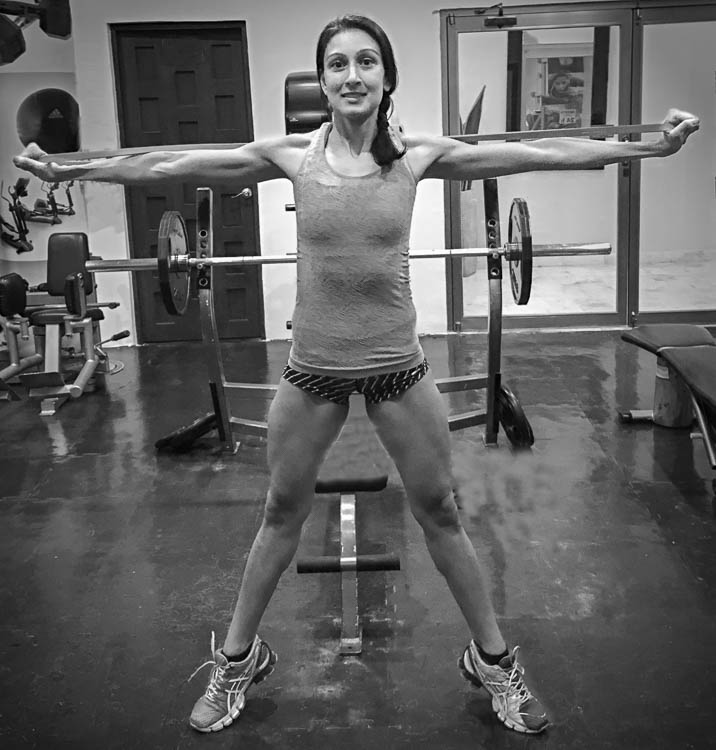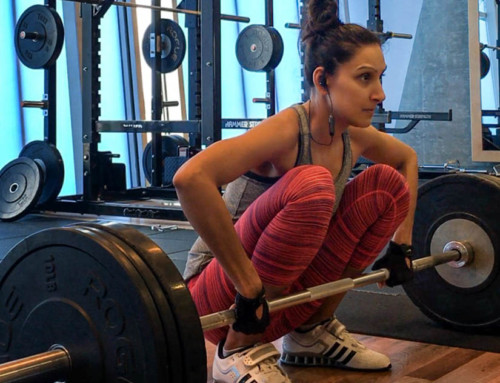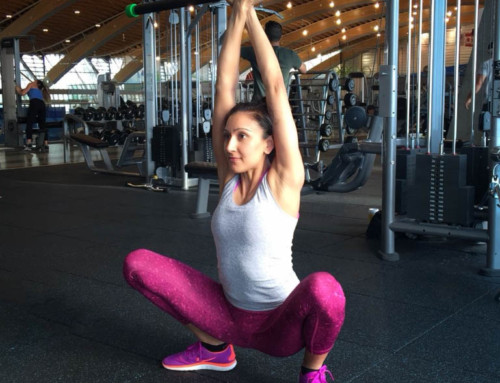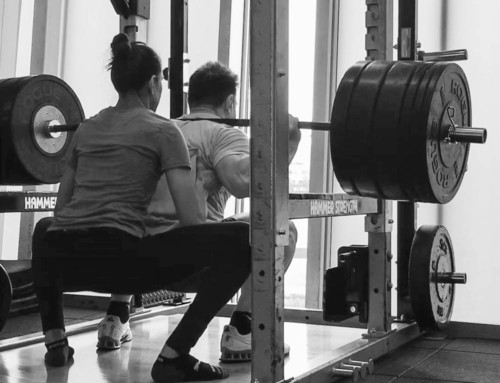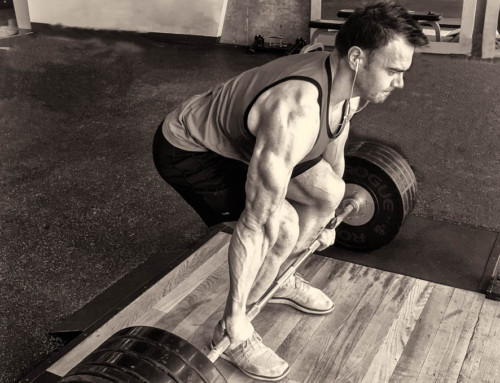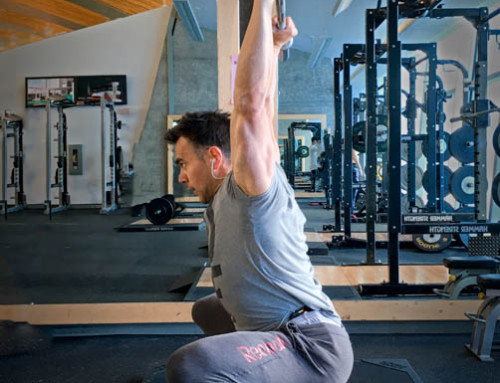In today’s world, everything is isolated, categorized and packaged nicely into a box. The same concept is often applied to training movements, designated them into specific exercises. Such strategies work up to a certain point, until the expended efforts do not yield benefits, or worse—result in injuries.
Training is not a complicated entity as we often make it out to be, however we need goals and of what we’re trying to achieve and understanding how from an exercise stand point. In this article, we’ll discuss the push press—upper body push movements and exercises—that carry numerous health benefits.
Move over Bench Press
If you ask people, what is the “best upper body exercise”? Most will undoubtedly answer bench press (horizontal push). This notion is true as most gym goers often measure their level of fitness by “how much they can bench”. Though bench press is an exercise that has potential to develop significant strength gains, it’s not the best one.
To continuously develop biomotor abilities such as strength, speed, power, balance, mobility and coordination, we need to understand involved systems that contribute to overall force production and personal performance. To do that, we shall address the most mobile joint in the body—the shoulder joint.
It’s all about the Shoulders
Details of shoulder anatomy and mechanics are beyond the scope of this article (though if anyone is interested, leave a comment below, we’ll be happy to write about it). However, we do need to know the basics in order to understand how to continuously develop this body area injury-free.
The shoulder itself is made up of three bones; clavicle (collarbone), scapula (shoulder blade) and humerus (upper arm bone). The conjunction creates a shoulder joint where head of the humerus sits against a shallow cup area of scapula called glenoid fossa. Therefore, the shoulder joint is also known as glenohumeral joint.
The ball (aka Humeral Head) in the socket construction gives the shoulder joint great mobility for the arm to move in circles as well as pushing and pulling in many directions. Shoulder joint itself is held together by a two layer capsule. The inner layer (synovial layer) provides needed fluids to joint components easing the tension during motion, while the outer layer (fibrous layer) is a tough structure made up of several tendons (connective tissue that link bones together) designed for stability and durability.
To further stabilize the shoulder joint a group of seven muscles (scapulohumeral muscles) and tendons cover the area and attach to humerus and scapula. These muscles include the deltoid muscles which cover the shoulder joint from upper three sides (anterior, lateral and posterior); and rotator cuff muscles, as the name suggests stabilize the joint during rotation style movements. There are numerous other muscles that either directly attach to the shoulder joint itself, or to shoulder bones including the chest (pictorial major), arms (biceps, triceps) and back muscles (latissimus dorsi, levator scapula, trapezius and rhomboid major and minor). These muscles connect and intertwine in and around the shoulder area allowing the arms to produce force through single direction (horizontal or vertical) or, in a rotational over or under hand manner.
Overhead Press—the Outcast
The shoulder is complex due to associated muscles, bones and connective tissue that make up this body part. And, by being able to push and pull in multiple and rotational vectors, there is a statistically higher chance of injury. Excessive use of a specific motion, lifting maximal loads or placing the shoulder joint under awkward angle are all examples that potentially create issues of overuse and/or motility. Because of these reasons, overhead presses have been tabooed by many fitness professionals and omitted altogether from training protocols.
Now, anything we do in the gym or elsewhere carries a certain amount of risk—that’s just life. Exercises performed with poor form further elevates chances for injury. However, shoulder morphology shows greater muscle engagements of arms, shoulders, back and core when lifting the weight “overhead” as in vertical press. Also, by performing this motion standing while generating initial momentum with lower body—push press—we enhance muscle activation of the legs and posterior chain for stability and coordination.
Push Press – the True Strength Test
Push press is the dynamic version of a more common strict military overhead press. This compound exercise works multiple muscles but the work horses in this movement are the deltoids, triceps and traps. Due to initial leg drive, push presses engage quadriceps, glutes and hamstrings while abdominal wall and lower back stabilize the trunk preventing excessive spinal arching. Essentially push press is a total body exercise which has number of performance benefits discussed below.
Shoulder Health
This is an article topic in itself but we’ll try to cover major points. The main argument against overhead press is that it compresses the muscles at the start position (weight over the upper chest / clavicle area) and causes shoulder impingement at the top of the lift. Lets briefly discuss these common arguments. First of all, there are significantly less articles against overhead press than it used to be, and that’s a good indication of people researching, experimenting and understanding the movement. Secondly, any exercise performed with poor technique increases risk for injury and with shoulder joint being so mobile simply increases this probability.
Exercise Start Position
The starting position of the bar across the clavicles may cause some compression but, it’s confusing as to how it may damage muscles. This argument is very vague and full explanation was not given by the overhead press critics. If some of the micro-trauma does occur at the initial part of the movement, this is greatly minimized during the push press exercise where the momentum is transferred into the load from leg drive. Thus, initiating the movement of the shoulder and avoiding the dead-start position. Also, working with comfortable intensities is important to overall shoulder development and vitality.
Many critics of overhead press present a scenario of maximal loaded barbell that a lifter is pushing from dead-stop over the head, thus placing more pressure on lower back. But, why do that and what is the purpose? If the goal is shoulder health, then mobility and muscular engagement are the areas of focus without the need for maximal intensities. Furthermore, if strength is what you’re after, joint mobility and overall technique is just as important and takes precedence over any increases in weight. First, we need to attain proper form, then understand the movement through practice, and finally craft a proper training plan where progressive overload of intensity, frequency and overall volume can be gradually implemented and outcomes are monitored.
Overhead Position
The shoulder impingement argument refers to one of rotator cuff muscles (supraspinatus). Some critics even state that we were never designed to push things overhead, and thus should not perform this movement. First of all, if we were not designed to push overhead, then we simply would not be able to achieve this position through our joint angles. Mobility of joints is one of the main training goals here at Science and Strength, which produces greater range of motion (ROM). If you’re unable to reach a specific angle in an overhead position, the solution is not to give up on the movement, but to practice it through mobility and flexibility work. It is by working on what is difficult, we produce directed adaptations and evolve overall performance. The same argument goes for the rotator cuff and the shoulder joint at the top overhead position. Studies have shown that supraspinatus is highly active during overhead presses out of all rotator cuff muscles. Issues with supraspinatus are more to do with inappropriate program design rather with the movement itself. If you have weak rotator cuff muscles, the focus should be to strengthen them first and then work towards a heavier press.
Joint Coordination
Standing presses have a notion to be more dangerous due to greater instability; placing more stress on lower back. Solution to this, many critics recommend seated version of the push press by pushing the back against the seat pad. At Science and Strength, our goal is always to become Stronger Leaner Faster versions of ourselves. Selecting a less stable surface and performing an exercise in a standing position engages more tissue to perform the overall movement. Overload parameters are secondary, as the main focus is placed on functionality of the movement and proper biomechanics. Performing overhead presses while standing simply engages more muscles from all over the body either as prime movers or stabilizers. By including leg drive of a push press, we amplify this muscular activity across all body planes.
Another reason to perform overhead presses standing is for better coordination between two joints which contribute to a vertical press movement. First one is the shoulder joint (already discussed) but the other one is called scapulothoracic joint and is located at the back where scapula joints the thorax (backside of rib cage attached to the spine). When raising the arm, you’ll notice that a shoulder blade of the same side also moves up and downwards along the back. These two joints work together in order to achieve full overhead position and this coordination is called scapulohumeral rhythm. Both joints move in a pattern in order to raise the arm into overhead position. Disruption of this scapulothoracic rhythm compromises joint mobility and overall range of motion, and overtime placing rotator cuff muscles at risk. Seated versions of overhead press pin the scapula of the shoulder against the pad (in a seated position). Think about it, when you’re trying to lift overhead, you are pushing the back into the seat for a more stable position. This position limits scapula movement and coordinated rhythm with the shoulder joint. Continuous use of seated position in overhead presses increases potential for injury. Therefore, in order to maintain shoulder health and increase functional performance, we at Science and Strength always perform overhead press exercises standing.
Benefits of Vertical Pushes
Power Development
The main purpose of the push press is to improve shoulder strength and lean mass. The push press differs from other upper body exercises as it is initiated by the legs. This allows you to use higher weights, around 15-20% higher than the standard strict military press variant. Also, the exercise itself is faster and more dynamic than others. Leg drive momentum is quickly transferred through stability trunk into the deltoids, the triceps and the traps, moving the load off the clavicle area upwards. Due to this “rolling start” the shoulders are able to press greater weights at faster speeds, thus improving overall power development.
Total Body Workout
Push press develops strength and power in the entire body. Push press has been studied and shown to produce great lower body power, compared to jump squat. But unlike jump squat, the momentum generated by leg drive is transferred into the trunk for stability and strength development. The core harnesses and moves the power upwards towards upper body extremities where overhead press is initiated by arms, shoulders and back, and is accelerated upwards through concentric contraction. Techniques such as staying on forefeet, pushing head forward (after clearing the bar path) and shrugging up at the top position, adds more muscular contribution from the entire kinetic chain, upper chest, abdominal wall and quadriceps. As with conventional deadlift, muscles in the entire body participate in force production in assigned roles.
CNS Activation
All of these muscular participation needs are recruited and activated by Central Nervous System (CNS). Explosive movements greatly increase CNS engagement and push press is no different. Often due to initial leg drive, push presses can be done with heavier weights. Greater intensities performed at speed recruit more muscle fibers. CNS activates appropriate motor units (MUs) throughout the body in order to perform this dynamic exercise. CNS also continuously coordinates all active MUs to maintain force production through stronger contractions.
Carryover Effect
Push press does not only improve shoulder strength, but has positive effect in other exercises. Different muscles engaged in push press generate force in number of upper body and lower body movements. Exercises such as bench press have been shown to have a highest carry over effect. However, from personal experience, due to strong and healthy shoulders, we have noticed an increase in numerous exercises, including all upper body push and pulls as well as deadlifts.
Final Thoughts
With on-going progression of fitness and performance, at times we find ourselves in circular discussion. What was good once, became bad, and is becoming good again. The overhead presses appear to be an example of this circular fashion.
There is a pro and con to every argument. Like with anything in life, we need to educate ourselves, ask questions and find answers that assist in achieving personal goals. Overhead presses requires understanding of the movement and practice to develop technique. Our preferred exercise of vertical press is the push press. Push press carries number of benefits including total body strength and power development, increase of performance in other exercises, and greater neural drive along with CNS. Push press also directly yields strong and healthy shoulders while coordinating numerous other body parts to lift as a unit.
We hoped you enjoyed this article, if so, please share it on your favourite social media so, we can get on google’s radar. Fell free to leave us a comment and start a discussion on the topic.
If you are looking to build strong, lean and beautiful shoulders be sure to check out our training books:

